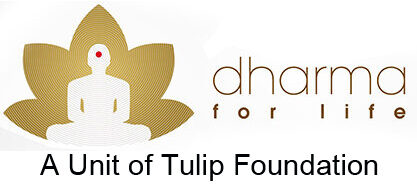I bow to the countless seekers of truth who have searched and found the absolute. I bow to all the founders of all the thought schools of India, who ignited the spark of seeking and provided some solace in some form to the seekers.
I was delighted to stumble upon an online course, ‘An Introduction to Indian Philosophy,’ during one of my Facebook scrolls. I am so glad I instantly joined it, as I have always felt the need for a platform that provides all the answers to queries related to different Indian philosophies. It was an awesome introductory course organised by Open Pathshala and explained by SN Sudharsan, an author, teacher, and researcher. As a researcher of the philosophy of Jainism, I must say this course has erased my misconception that most Indian scholars either ignore this ancient Indian philosophy or do not heed its main teachings. The teacher, Sudharsan ji explained everything with a comprehensive perspective.
Because of this course, I now have clarification on the following:
- Sanātana Dharma is the canopy under which all those philosophies originated in Bhārata, modern-day India.
- The present-day Sanātana Dharma consists of Jainism, Buddhism, Yoga and the Vedanta.
- Out of the many schools, the following prominent ones have now been extinct: a) the school of Ajñāna (Skepticism), whose main ācārya was Sanjaya Belathiputta, b) the school of ājīvikā or Niyativāda (Determinism), whose main ācārya was Makkhali Ghosala, c) Cārvāka or Lokāyata, whose main ācārya was Ajita Kesakambali, d) the philosophy of Nyāya (Logic), whose main ācārya was Akshapada Gautama Rishi, e) Vaiseshika (Naturalism), whose main ācārya was Kaṇāda Kashyapa, who also discovered the first atomic theory. f) Sāṃkhya (Dualism), whose main ācārya was Kapila Muni. g) Mīmāṃsā (Critical Investigation), whose main ācārya was Mahārishi Jaimini, a Nalanda University student.
- Like Mahāvīra was the last and the 24th tirthaṃkara of the tirthaṃkara tradition, Gautama Buddha was the 28th Buddha of the Buddha tradition.
- The Vedānta has three branches: Dvaita (Duality), Visishtadvaita (Qualified Non-Duality), and Advaita (Non-Duality).
- All the spiritual teachers of India have described the cosmos as cyclical.
- In India, all seekers are free to follow whichever path suits them the most.
- All the founders, be it of any philosophy, are only the reformers of the truth, and they explain and describe the same according to the intellect of the people of their times and try to bust the ignorance.
- Each spiritual guru of India teaches to focus on the individual journey of the soul and emphasizes the possibility of attaining mokṣa, or absolute freedom, from the cycle of birth, death and rebirth.
- All Indian philosophies seek to answer one question—who am I? The paths to that ‘I’ can differ, but each soul’s ultimate destination is the same.
The last tirthaṃkara, Lord Mahāvīra, logically refuted the 363 schools of thought of his time. However, attaining that level and understanding how he did so is far from a present-day human’s understanding. As an Indian and a researcher of Jain philosophy, I feel proud of my nation again and the immense treasure of wisdom it beholds.
At last, I would like to add that rather than calling a set of religions Sanātana Dharma, we must say that the dharma is Sanātana, as all humankind’s quests lead to knowing the eternal laws of the universe, and this is nothing but religion.
Dr Medhavi Jain
Founder
Dharma For Life

